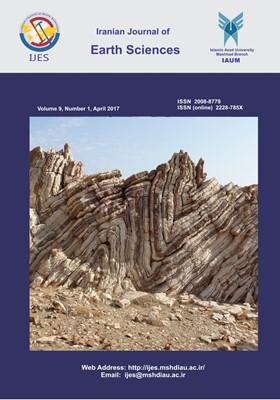Satellite thermal surveys to detecting hidden active faults and fault termination, Case study of Quchan fault, NE Iran
Subject Areas : MineralogyReza Arjmandzadeh 1 , Vahid Shafiei Rashvanlou 2 , Rahim Dabiri 3 , Alireza Almasi 4
1 - Department of Geology, Payame Noor University (PNU), P.O.BOX 19395-3697 Tehran, Iran
2 - Department of Geology, Payame Noor University (PNU), P.O.BOX 19395-3697 Tehran, Iran
3 - Department of Geology, Mashhad Branch, Islamic Azad University, Mashhad, Iran
4 - Department of geology, Lorestan University, Khorramabad, Iran
Keywords: Quchan fault, Landsat-8, drainage pattern, Thermal Anomaly,
Abstract :
The Quchan fault is located in Quchan - Shirvan area which is a part of Chenaran- Bojnourd plain in Kopeh-Dagh zone, NE Iran. The Quchan active fault with northwest – southeast trending is one of the most important strike-slip faults in the area which its activity led to the numerous historical and instrumental earthquakes. The Neo-tectonic activities of this fault are investigated by the drainage patterns, displacement of the waterways, the impact on the alluvial fan deposits and the Quaternary sediments cutting. Here, we aim to employ instrumental seismicity along with satellite imagery data, thermal images, shuttle radar topography mission (SRTM) data plus field observations to explain the mechanism and active tectonics of the southeast Quchan fault termination. Processing Landsat-8 image synchronous with the maximum micro-seismic occurrences reveals that thermal anomaly is positive and corresponds to the major lineaments. Thermal anomaly images have also revealed three hidden faults which have not yet been distinguished in the field surveys. The continuous strike slip activity of the Quchan fault over the time resulted in the formation of compression zone and new thrusts along the southeastern end. By continuance of thrust activity, the anticline starts to accrete and the older thrusts are covered with folding sedimentary rocks, thus thrust loader continues until now. This research is the first successful attempt in Iran to detect hidden active faults and investigate fault termination by employing satellite thermal surveys.

